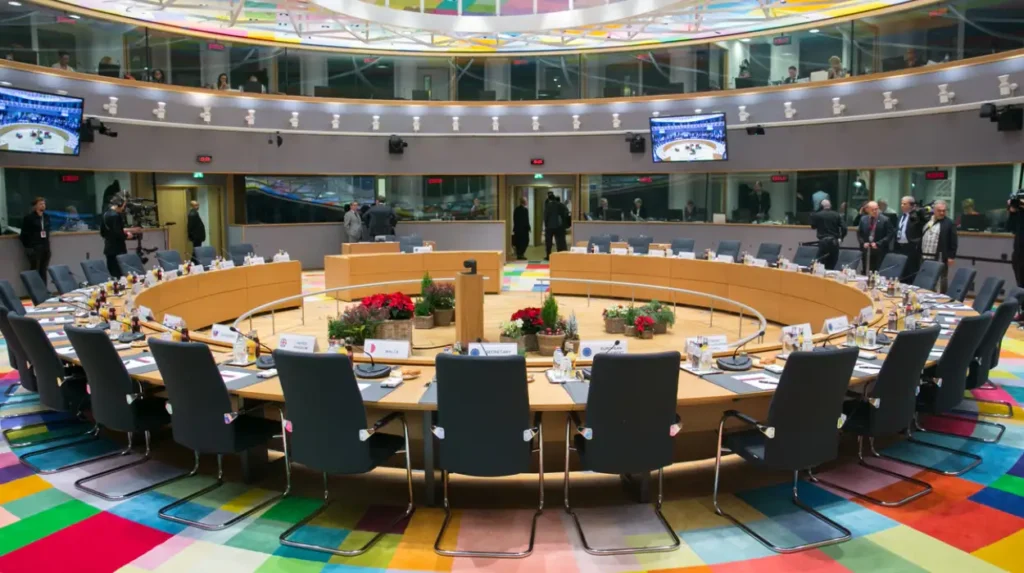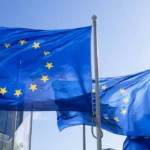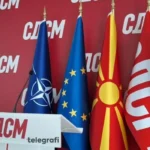The European Union (EU) stands as one of the most innovative supranational political entities in the world. Comprising 27 member states, the EU embodies a unique form of cooperative governance designed to harmonize diverse national interests while fostering economic growth, social cohesion, and political stability. At the heart of this complex political system are its institutions each with distinct powers and responsibilities that interact in a well-structured manner to formulate and implement policy.
Introduction: The Foundations of EU Institutional Cooperation
European integration has evolved over several decades, with the EU’s current institutional framework largely shaped by the Maastricht Treaty (1992) and the Lisbon Treaty (2007). Today, the union is governed by seven main institutions and several smaller bodies, all embedded in a system of checks, balances, and shared competencies.
The complexity of this institutional tapestry is necessary to accommodate the sovereignty of member states, uphold democratic legitimacy, and manage policy areas ranging from trade and environment to foreign affairs and justice. Understanding how these institutions interact is key to grasping the EU’s functionality and its role as a global actor.
The Three Main EU Institutions and Their Collaboration
While the EU consists of seven official institutions, the three main bodies most central to governance and legislation are the European Commission, the European Parliament, and the Council of the European Union (also known as the Council of Ministers). Together, these institutions form the backbone of EU policy-making and ensure democratic representation, executive action, and national government involvement.
The European Commission: The Executive Arm
The European Commission serves as the EU’s executive body responsible for proposing legislation, ensuring the implementation of EU policies, managing the budget, and representing the EU internationally. Comprising one commissioner from each member state, the commission operates under the leadership of its president, who is nominated by the European Council and confirmed by the European Parliament.
The commission holds the exclusive right to initiate new EU laws and spending proposals. After drafting legislation, the commission submits proposals to the other institutions for approval, simultaneously acting as the guardian of EU treaties by monitoring compliance among member states.
The European Parliament: The Directly Elected Legislature
The European Parliament is the only EU institution directly elected by EU citizens, with seats apportioned based on state populations. Parliament’s primary role is to deliberate on, amend, and approve legislation alongside the Council of the European Union. Additionally, it oversees the commission, including its approval and the power to dismiss it through a vote of no confidence.
While Parliament cannot initiate legislation, it wields considerable influence by shaping policies through negotiation, particularly within the co-decision procedure (also known as the ordinary legislative procedure), which requires Parliament’s agreement with the Council for laws to pass.
The Council of the European Union: Representing Member States’ Governments
The Council of the European Union acts as one half of the EU’s legislative body, representing the national governments of member states. Unlike the European Parliament’s fixed membership, the Council’s composition varies by policy area; ministers from each country relevant to the subject matter attend its meetings—foreign ministers for external relations, agriculture ministers for farm policy, and so forth.
Together with the Parliament, the Council reviews, amends, and adopts legislation. It also coordinates policies among member states, particularly in areas of shared or supporting competencies.
How Are Decisions Made Among the EU Institutions?
Decision-making in the EU hinges on collaboration and consensus-building among institutions, member states, and representatives of the European citizens. Different procedures apply depending on policy areas:
- Ordinary Legislative Procedure (Co-decision): The standard process for most legislation, involving joint approval by Parliament and the Council following the commission’s proposal.
- Consent Procedure: Used primarily for sensitive matters like EU enlargement or international agreements, requiring Parliament’s consent but limiting amendments.
- Consultation Procedure: Parliament is consulted, but the Council can decide independently, typically for policies where member states retain more sovereignty.
The commission initiates legislation, while the Parliament and Council negotiate to finalize texts, often involving compromises reached during trilogues—informal meetings between the three institutions.
Other Key EU Institutions and Their Roles
While the commission, Parliament, and Council dominate decision-making, other institutions play vital complementary roles:
The European Council: Defining Strategic Direction
Consisting of the heads of state or government of all member states, the European Council sets broad policy priorities and resolves major political issues. Unlike the Council of the EU, it does not legislate but provides essential guidance shaping the EU’s political agenda and ensuring unity among members.
The Court of Justice of the European Union (CJEU): Ensuring Legal Compliance
The CJEU serves as the EU’s highest judicial authority, interpreting EU law and adjudicating disputes involving member states, institutions, businesses, and individuals. Its rulings are binding, ensuring uniform application of EU law across member states.
The European Central Bank (ECB): Managing Eurozone Monetary Policy
For the 19 EU members that use the euro, the ECB governs monetary policy, ensuring price stability and overseeing the banking system. While not directly involved in legislative processes, its decisions significantly impact economic governance.
The European Court of Auditors (ECA): Auditing EU Finances
Responsible for auditing the EU budget’s use and detecting fraud or inefficiencies, the ECA enhances transparency and accountability among EU institutions and member states.
How Do the Institutions Work Together in Practice?
The interplay among EU institutions is complex but systematic:
- The commission proposes legislation funded by an annual budget negotiated and approved by Parliament and the Council.
- The Parliament and Council act as co-legislators, balancing citizens’ interests and national concerns.
- The European Council guides institutional priorities, indirectly shaping legislative agendas.
- The CJEU safeguards legal cohesion and resolves conflicts.
- Specialized agencies support policy execution and enforcement across specific sectors.
This governance model allows for mutual checks and balances, promoting democratic legitimacy while respecting member states’ sovereignty.
Decision-Making in Other EU Institutions
Other bodies involved in EU governance, such as decentralized agencies and committees, provide expert advice, implement policies, and facilitate cooperation across member states. While they do not legislate, these institutions collaborate closely with the main bodies, enhancing the EU’s ability to respond to technical and cross-border challenges.
Challenges and Criticisms of EU Institutional Cooperation
EU institutions have been tested by crises including Brexit, migration surges, economic recessions, and geopolitical tensions. Challenges include:
- Decision-making complexity leading to slow responses.
- Balancing sovereignty with supranational governance.
- Divergent national interests affecting consensus.
Nevertheless, reforms, enhanced coordination mechanisms, and institutional strengthening efforts continue to improve the EU’s effectiveness.
The Power of Cooperation Among EU Institutions
The European Union’s institutional framework epitomizes a balance between unity and diversity, democracy and sovereignty. The EU institutions especially the European Commission, the European Parliament, and the Council of the European Union work together through an intricate system of shared powers, negotiation, and oversight to govern one of the world’s largest economic and political unions.
Understanding how these institutions collaborate clarifies the EU’s capacity to enact laws, manage common policies, and face global challenges cohesively. As challenges evolve, so too will the cooperation among the EU’s institutions, ensuring the union’s continued relevance and strength.







